
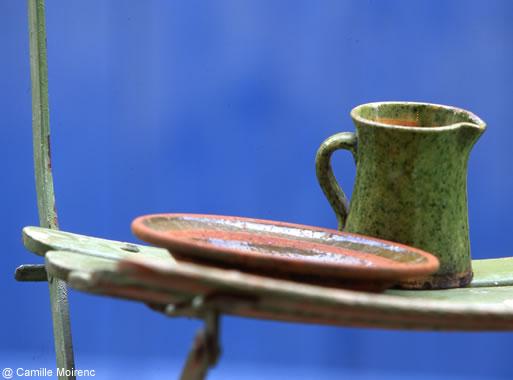
Provence is the land of the french pottery and earthenware with the towns of Aubagne, Moustiers, Biot, Vallauris, Cliousclat,... Old french pottery centers which have existed for centuries, and are still alive and inventive, creating pieces of french pottery in workshops that today are scattered by the hundreds in numerous different villages. To the appeal of its landscapes and its monuments, Provence has added, amongst others of its emblematic products, colorful, shimmering, Mediterranean pottery, without forgetting its glazed earthenware.
Today as in yesteryear, earthen crockey is a part of our daily life, firstly in the kitchen. In a time when one had to economize and preserve the provisions, there were big earthenware jars for olive oil, dried fruits and nuts. Who hasn't dreamt of having one of those beautiful pieces of french pottery in their garden? And those mortar and pestles where garlic and basil are ground for the pistou, to be added to soups and pastas? They are at the source of Provençale cuisine. Like the vessels which collected the goat's milk to make cream and cheeses.
It all started in the "tian", an untranslatable Provençal word, unless we take a chance with the word basin; in it vegetables were washed, dishes rinsed with the braising pot for the famous wine daube or beef stew, or they were the round soup pots in which bouillabaisse was made, on the beaches with water from the Mediterranean Sea, the armies of casseroles, terrines and pots, without forgetting the dishes for tomato or courgette gratins, stuffed aubergines and chard : over a hundred possible concoctions, even more delicious in summer when left to cool and develop their flavour. All sorts of pottery still made today for our culinary pleasure by the potters of Provence.
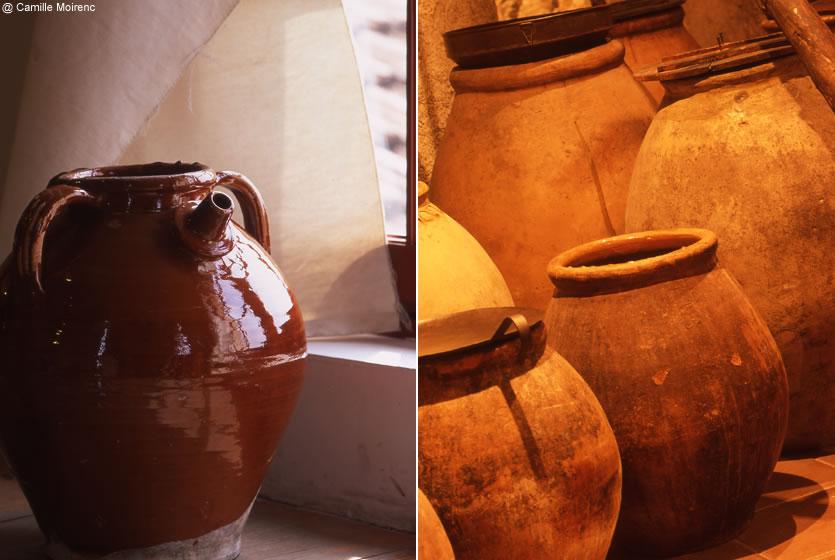
Jars for olive oil and dried fruits
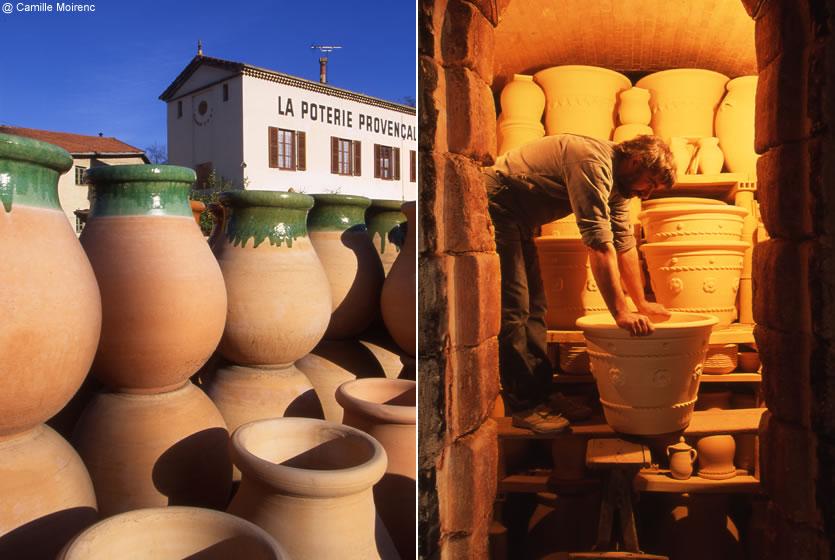
Provençal pottery for the garden
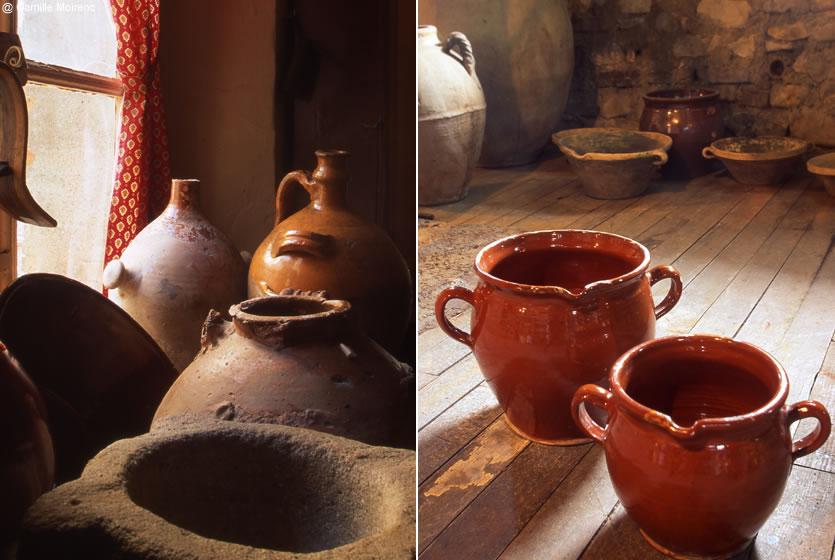
Provençal pottery: mortar and pestle
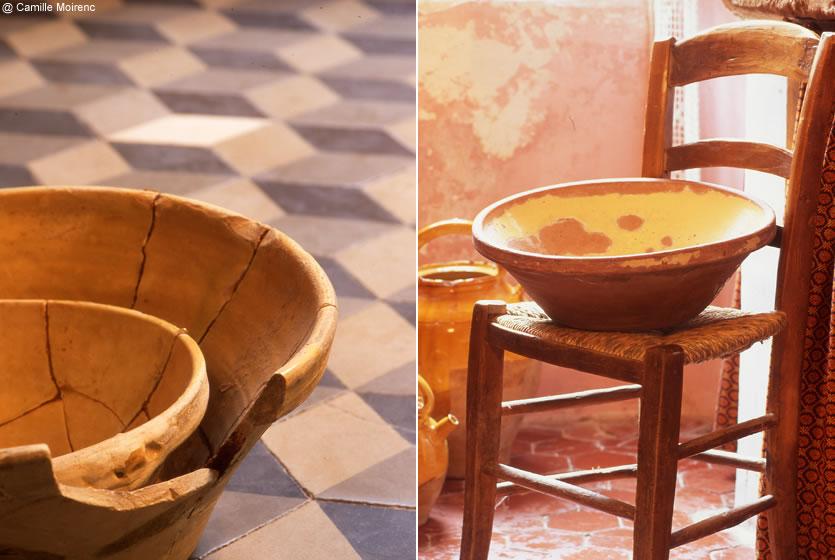
Pottery of Provence: cooking pots
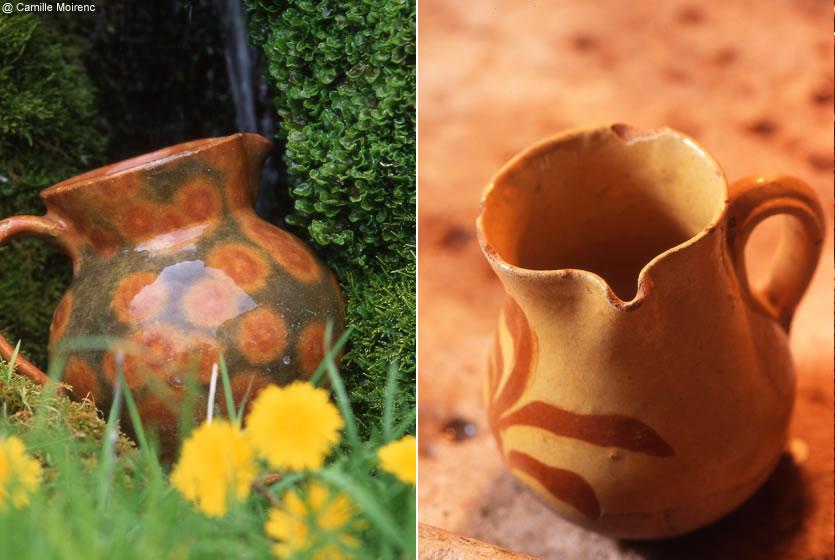
Pottery of Provence: stockpots
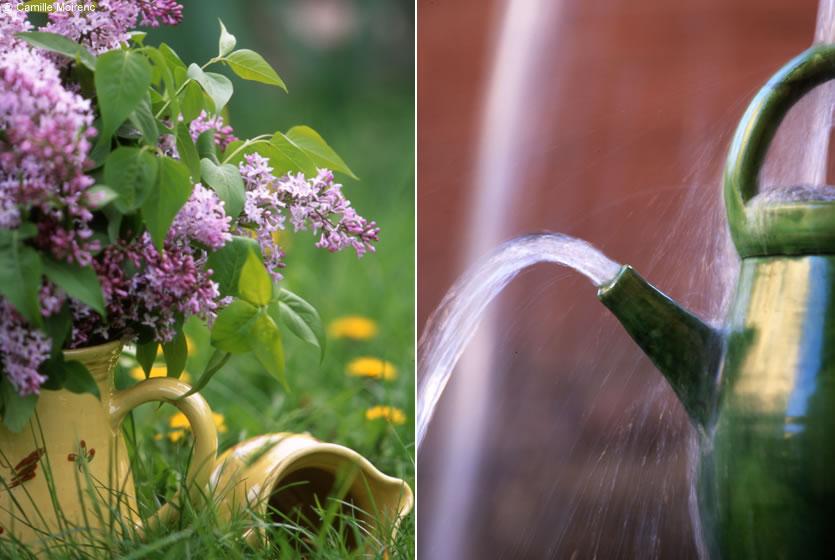
Enamelled pitchers
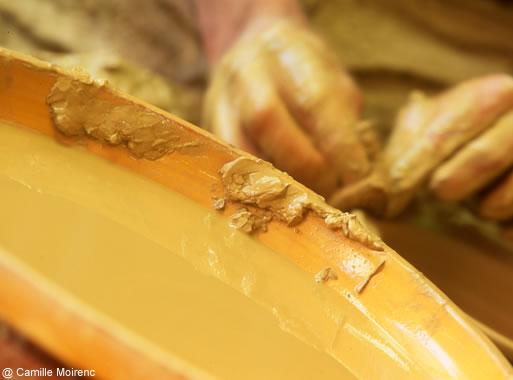
To enjoy these treats, Provençal potters offer multicoloured dishes, making a suite with the bowls and the companions to the water jugs. The last alone comprises a whole population of pottery, because water is rare in Provence, treated like a queen, as well she should be. There were the huge jugs for going to the fountain or the spring, with which the mule or donkey was ladened. Sometimes, this jug, only smaller, was carried on the head of the country home's daughter. On the table, it becomes a pitcher with its handle and spout. The work is ancient, continuing since the Middle Ages, these vessels for serving water and also wine. Now, the older jugs, potbellied and honey-couloured, ornament the country home's kitchen, sitting on a table holding flowers.
There are handmade pottery pieces born from the potter's imagination for a specific use, such as a melon holder, or just for the beauty of the act. For the potter is the god of clay; from his hands come jars, pots, casseroles, in what seems like the twinkling of an eye.
But there is the preparation of the clay and the fabulous work of the hands, the spinning, the turning out. After comes the drying in the mildness of the workshop or outside in the sun. Then it's time to go in the oven: its loaded, fired, taken out. Beforehand, it's decorated, with warm and luminous colours that enchant. The tools are simple, primitive: ribs, trimming tools for the initial work Imagination and craft replace the rest, such as the rope trick for the big jar. The master's once over completes the work.
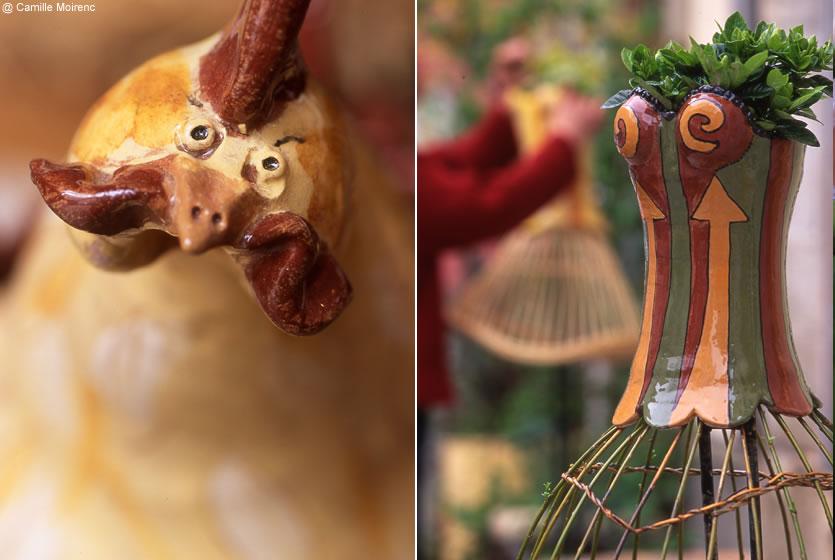
The potter's imagination
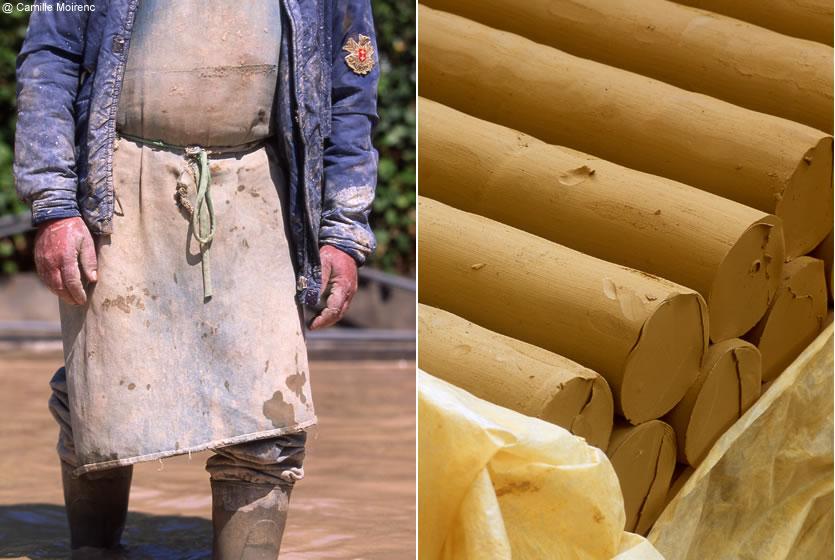
Preparation of the clay
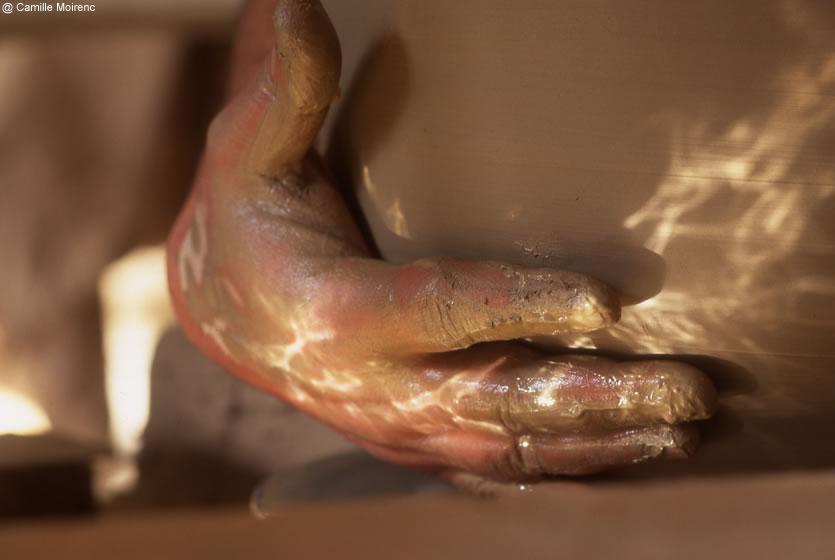
The potter's hands at work
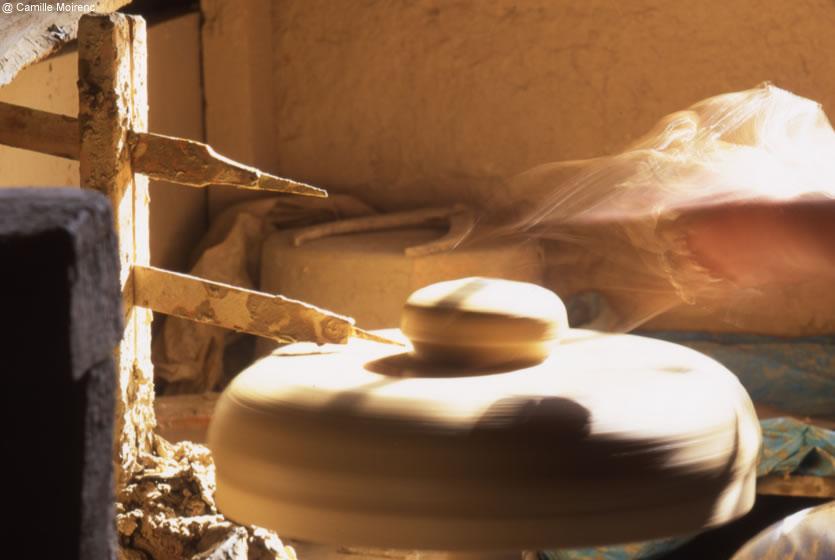
The pottery wheel
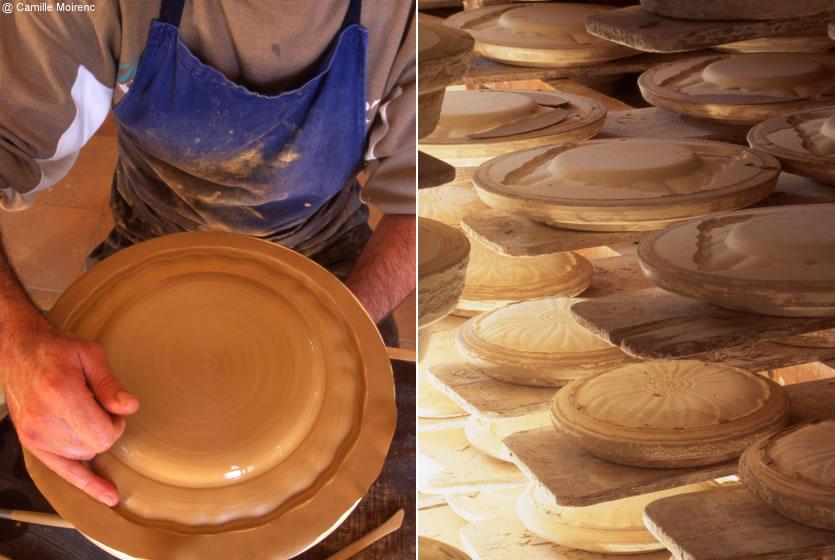
Removal from the mould
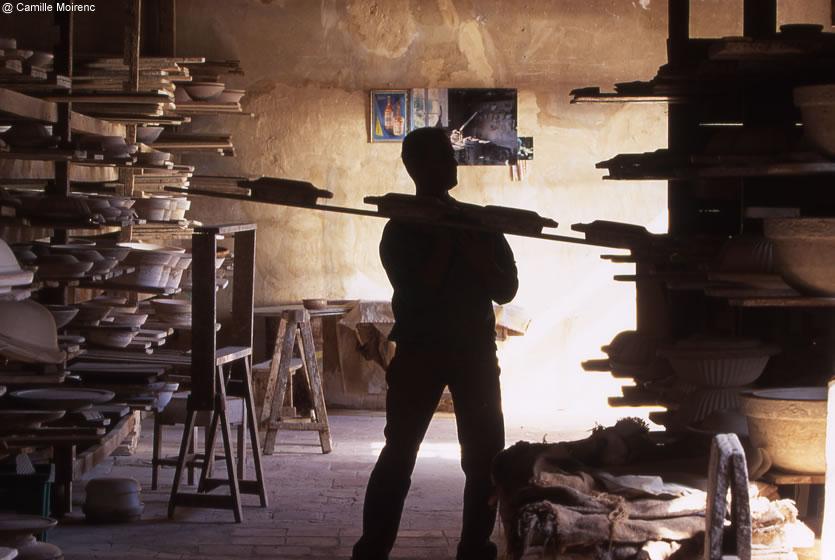
Drying the pottery in the workshop
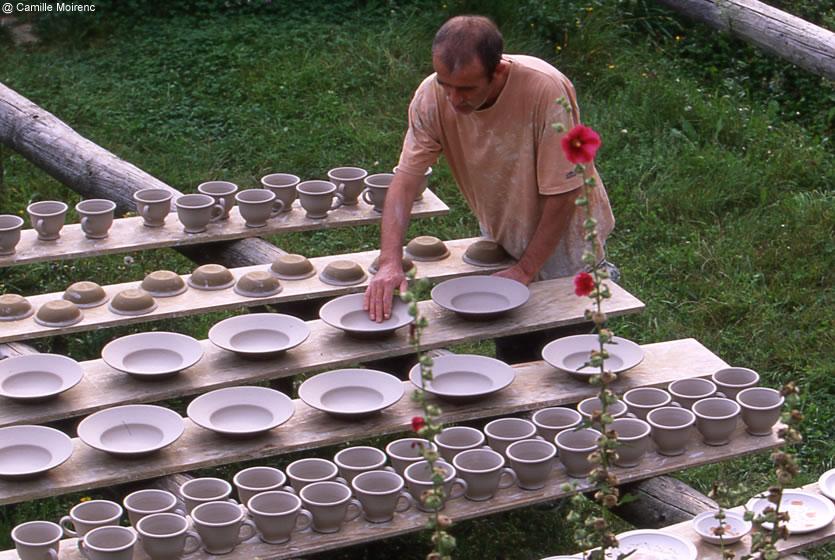
Drying the pottery in the garden
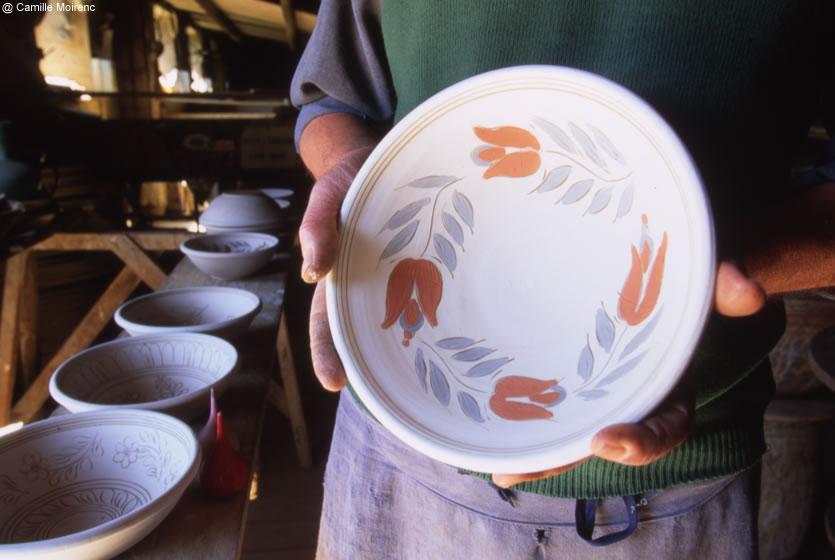
Colored drawings
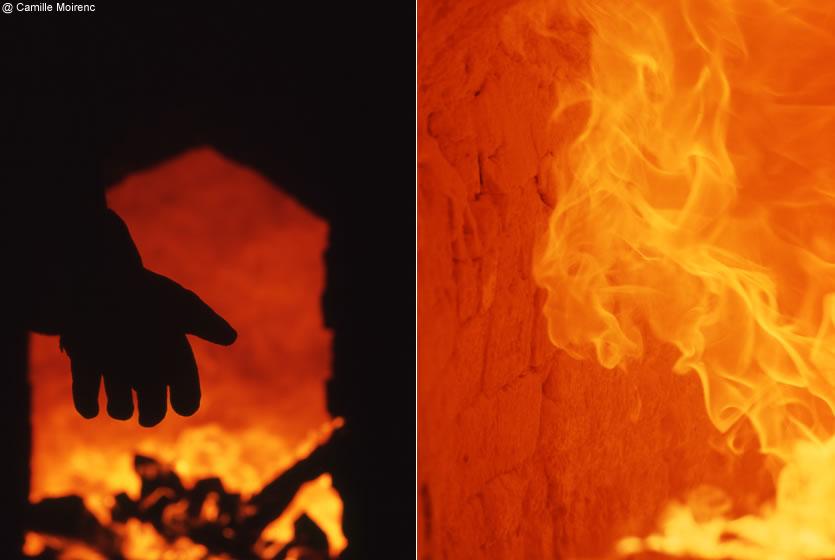
Firing the pottery in the kiln
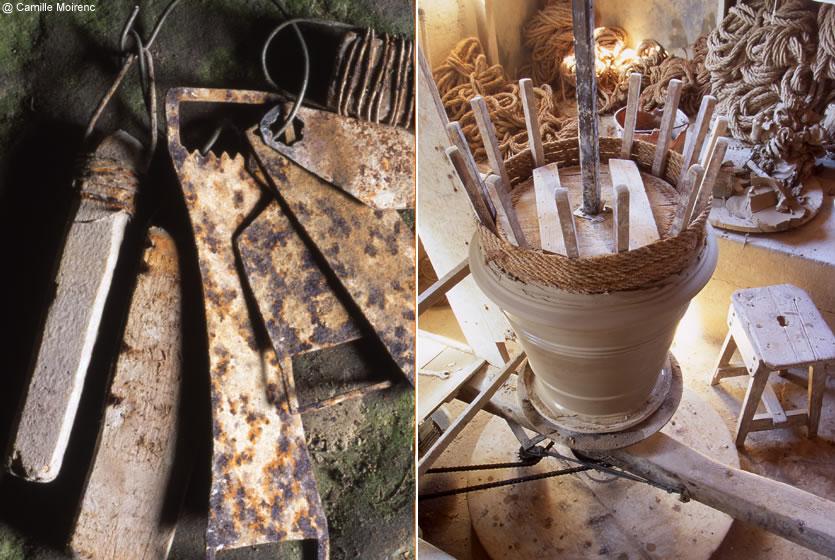
The potter's tools
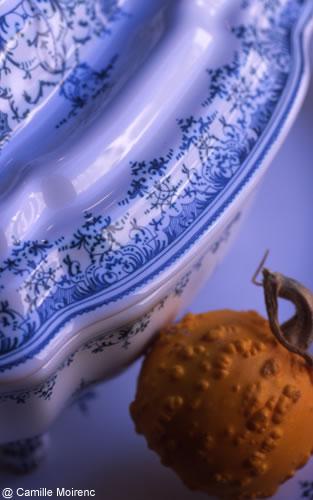
Another production is that of the tile-makers for houses. Their tiles are stamped on the bottom and often decorated on top. There's nothing more beautiful than the marriage of tiles and pottery. Starting with just a mass of clay, they finish off with a harmony in country houses and mansions. A whole way of life represented in the beauty of the colours, the tender, tinted light, found even in the homes of the poorest of peasants. And more so in the rich and noble residences, with their porcelain.
Today, and since the 17th century, Moustiers is the capital of earthenware. Here they started with the blue decoration, because Louis XIV had forbidden silver-plate, and also to imitate the decoration of Chinese porcelain. Nothing can be more refined than these display dishes plats where each affirmed his standing. In all, the most important thing is the quality of the clay, and above all, the talent of the painters.
From that come splendid pieces of work, some put to surprising use, such as a glass cooler for serving wine, and all made with the delicacy of a lacemaker. And we are not talking just about old, obscure objects: everything is still made in this day and age, like the pottery, and these marvels are not just sold in Moustiers, but in Apt, done with a marbled effect from a mix of clays, and in Marseille where you will find dishes and fruit with an appearance larger than life!
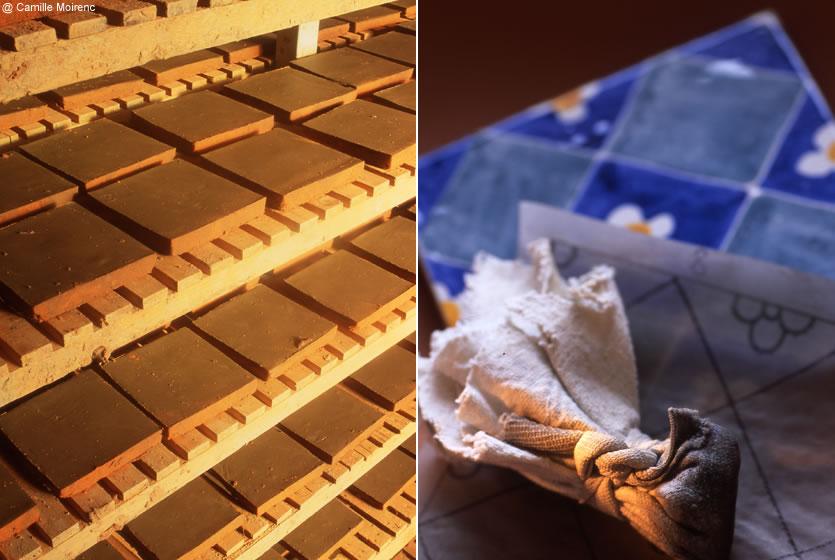
A marriage of tiles and pottery
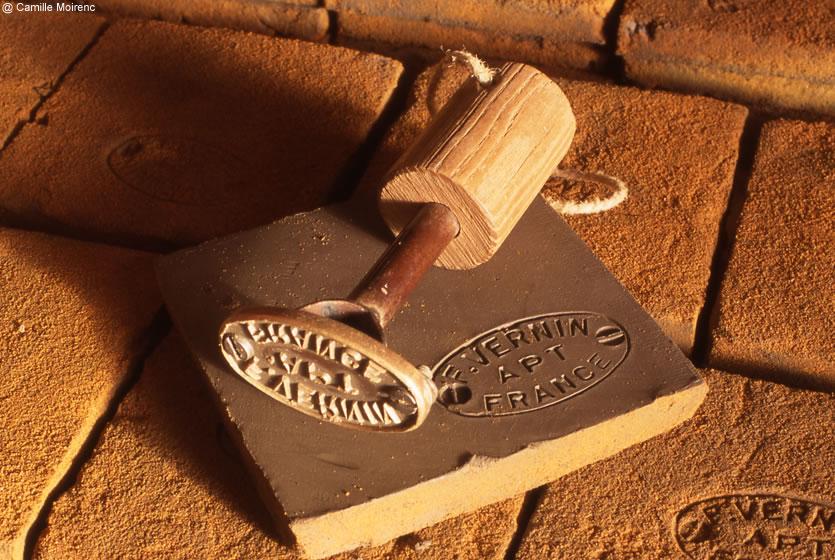
Embossed tiles
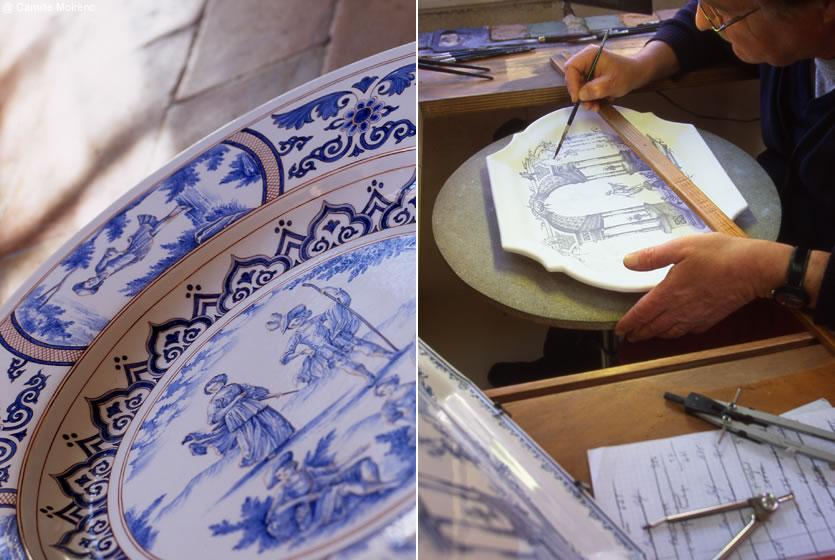
The ceramic ware of Moustiers
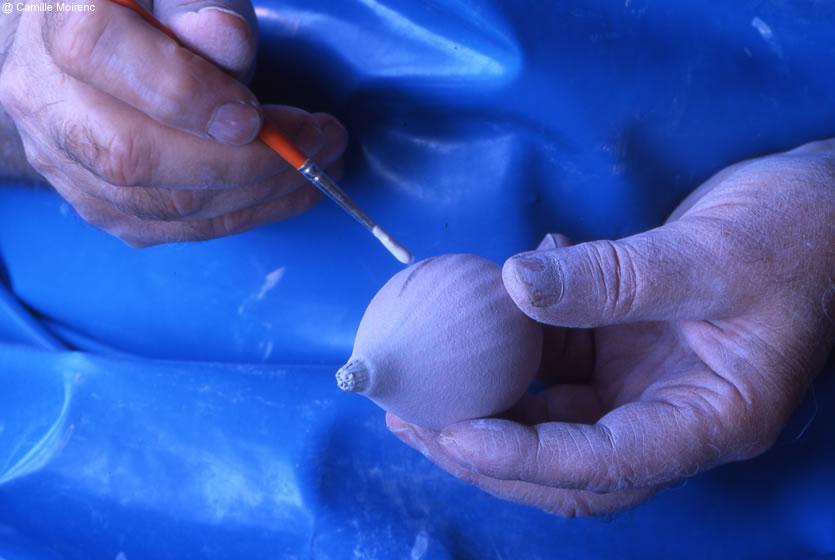
The painter's skill
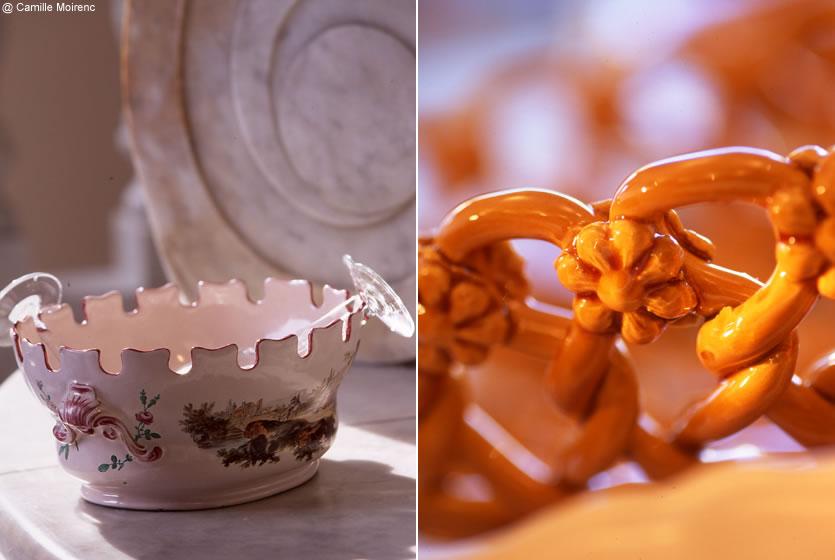
Glass cooler and lacework basket
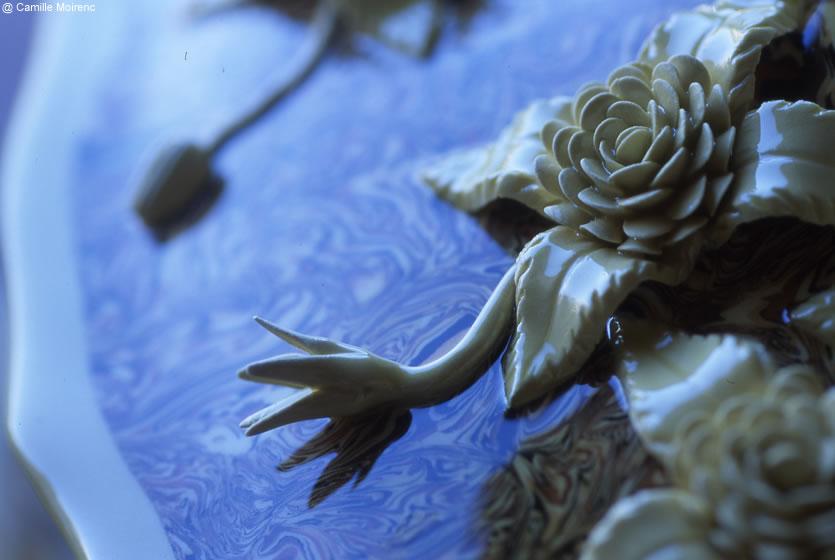
Marbled décor from Apt
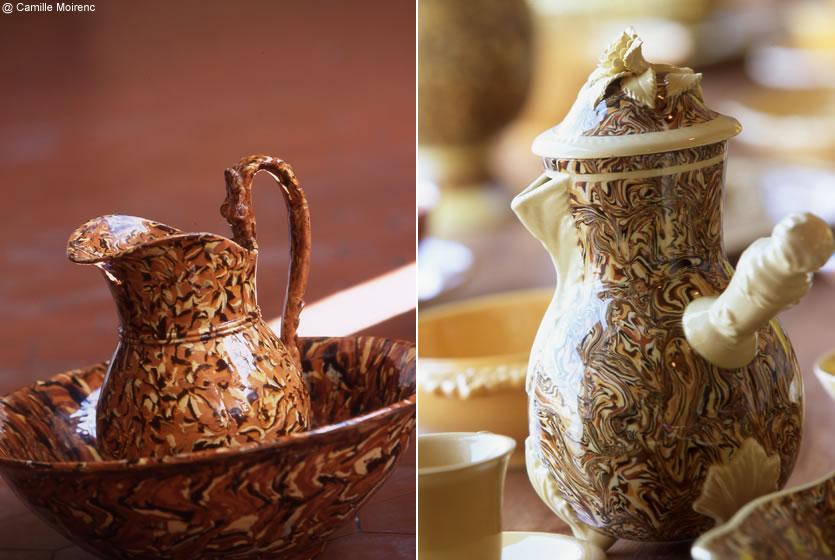
Faïence of Apt and marbled décor
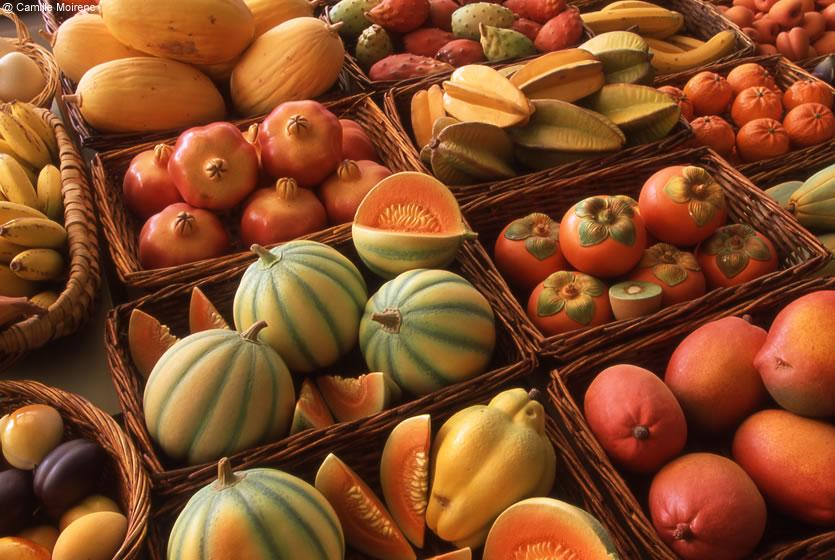
Fruit Pottery of Marseille
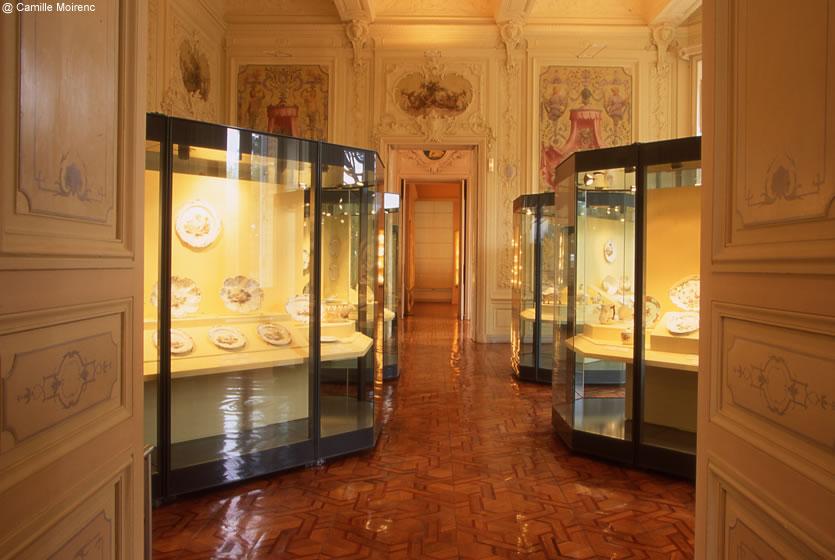
The Faïence Museum in Marseille
Where to sleep?